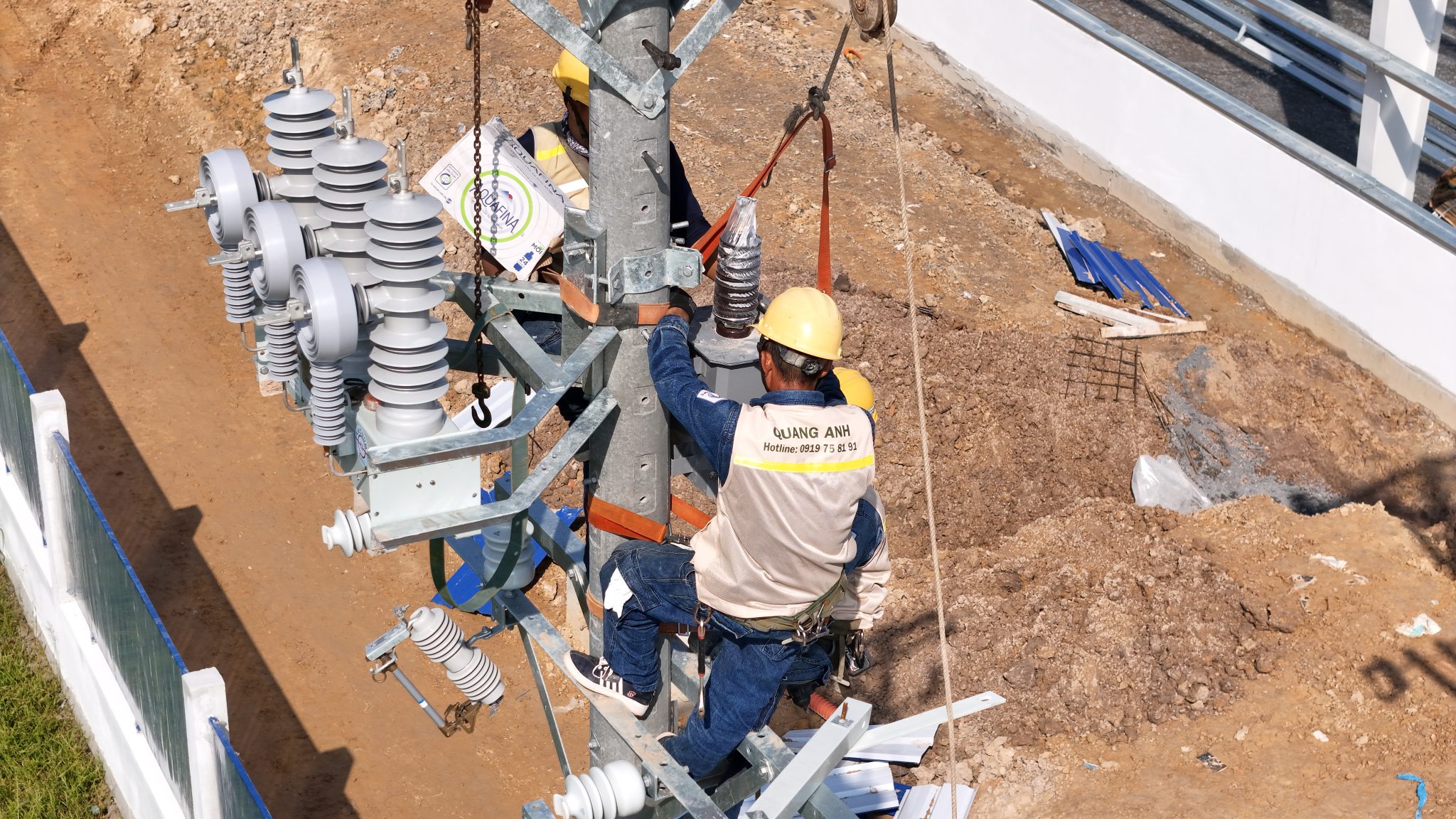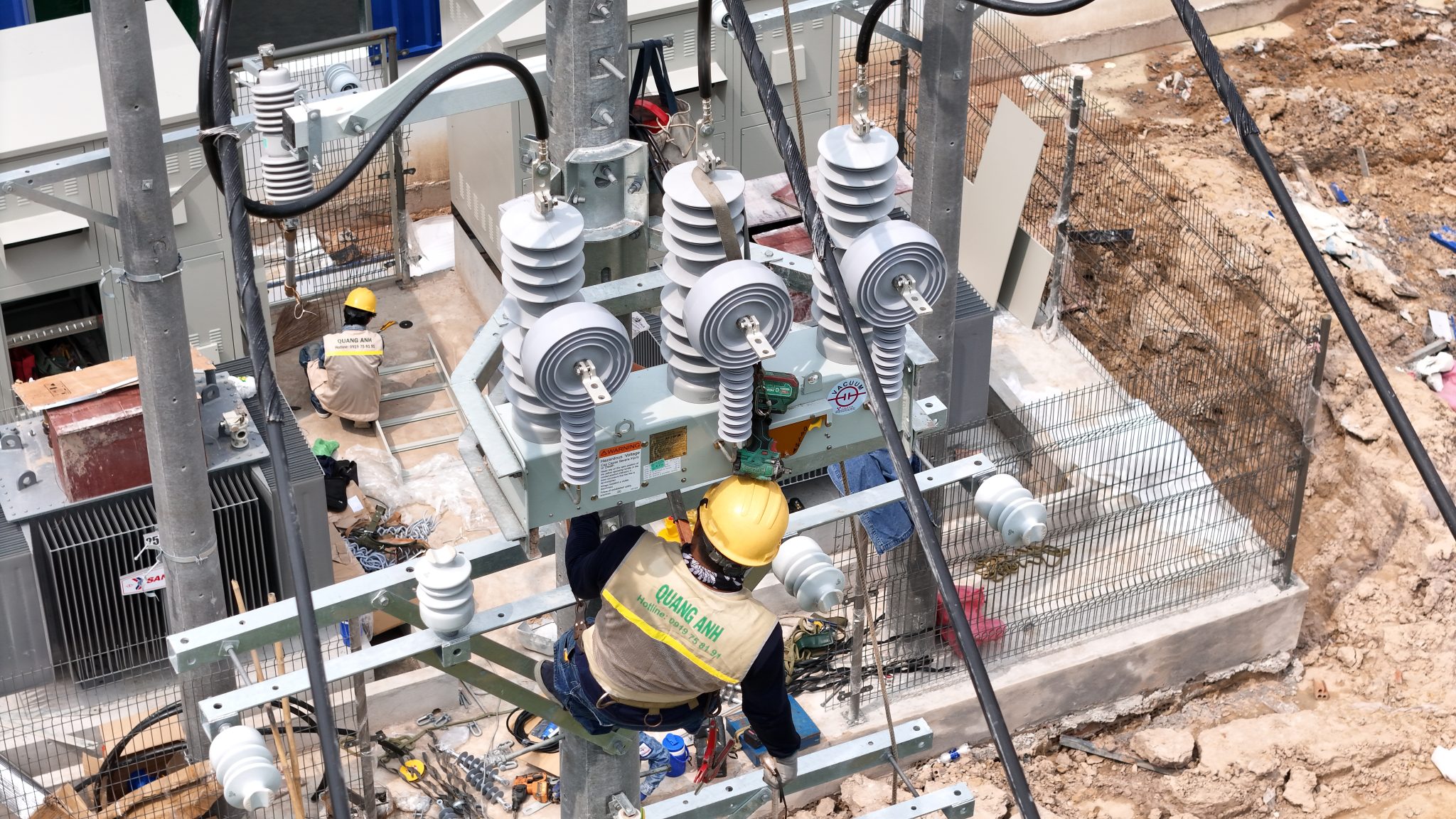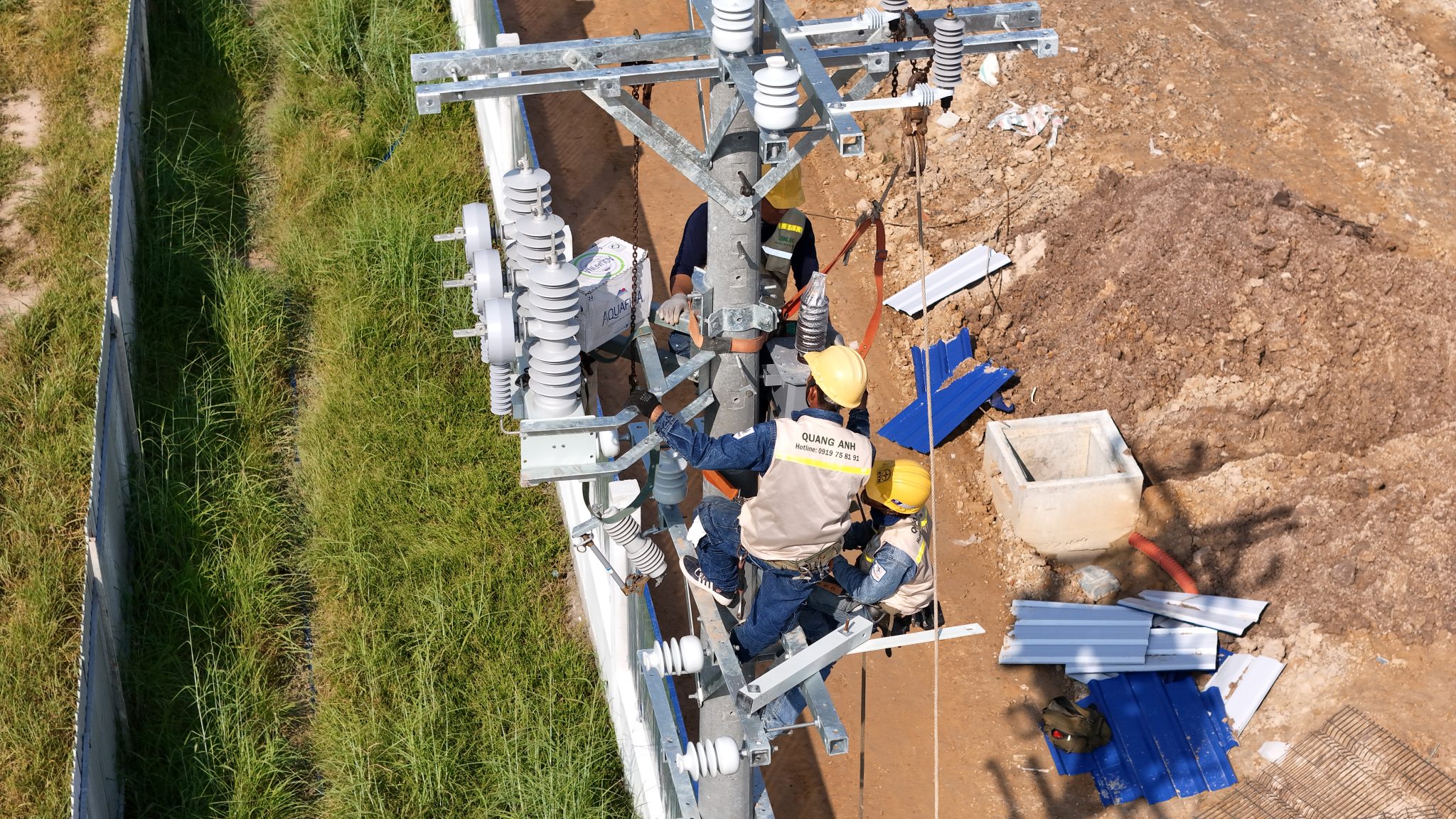The installation of an industrial electrical system is a complex process requiring precision and compliance with technical standards to ensure safety and performance.
Preparing Essential Equipment for Industrial Electrical Systems
Industrial electrical system installation requires transformers to adjust voltage levels, along with various industrial control units for distribution and management of electricity. The calculation of cable requirements is crucial in ensuring adequate power supply. Safety devices like circuit breakers and relays are necessary to protect and secure the system from faults.
Preparing essential equipment is vital to building an efficient and stable industrial electrical system, ensuring optimal power supply and management.
-
Substations and Medium/Low Voltage Control Units:
Substations are pivotal in adapting various voltage levels to meet the system’s needs. Medium and low voltage control units distribute power across different areas and equipment, optimizing production operations. -
Distribution Control Units:
Distribution control units (DB) supply power to various consumption areas, and control units regulate machinery, enhancing operational efficiency. -
Generators and Switchgear:
Generators serve as backup power sources, ensuring uninterrupted factory operations during grid failures. Switchgear ensures seamless transitions between primary and backup power sources. -
Electrical Power Devices:
Utilizing motors, pumps, and compressors is essential for operating machinery, enhancing production processes, and reducing energy costs. -
Low-Voltage Systems:
These systems mainly supply power for lighting, HVAC, and communications. Designed for low-voltage use, typically single-phase or 220V, they support auxiliary yet vital operations. -
Operational and Safety Systems:
Establishing a comprehensive operational and safety monitoring system is critical to ensuring the entire electrical system’s efficient operation, mitigating potential electrical hazards.

Designing an Industrial Electrical System
Accurate calculation of equipment and machinery power consumption is essential for suitable equipment selection. Designing high and low voltage networks is crucial in transmitting electricity from the national grid to the factory, ensuring a supply for devices under 1kV.
Designing an industrial electrical system is a core component of industrial infrastructure, optimized to ensure the safety and efficiency of equipment and machinery in production settings.
Calculating Total Power Consumption
It begins with calculating the total power consumption of all equipment and machinery, essential for selecting appropriate technical solutions. Accurate power assessment aids in choosing suitable cables and transformers from reputable brands like ABB or Schneider to ensure stability.
High Voltage System Design
The high voltage network is responsible for transmitting electricity from the national grid to the factory. A detailed design of this system is critical to maintaining consistent and safe power transmission. Arranging high-voltage lines and substations logically enhances electrical efficiency.
Low Voltage Network Design
The low voltage network, operating below 1kV, requires strategic installation of control units to be safe and efficient. This ensures optimal power distribution to factory equipment, facilitating smooth production operations.
Lighting System Design
Industrial lighting systems must be designed to provide sufficient illumination without wasting energy. Insufficient or excessive lighting can adversely affect production, so careful planning achieves balance.
Preliminary Design and Approval Process
The preliminary design phase includes comprehensive modeling and layout of installation areas and equipment. Submitted designs must be clear and accurate in proportion. Once complete, approval from clients is necessary to adjust details for practical application and cost optimization.
Designing industrial electrical systems involves integrating power consumption calculations with network layouts, requiring continual refinement and approval to ensure uninterrupted operations and long-term cost savings.

Installation and Implementation of Industrial Electrical Systems
Executing source cable systems following the transformer station requires careful cable ladder installation for securing and shielding. Industrial control units need precise installation as they are central to power distribution and control. Light electrical systems like fire alarms and lighting are also critical.
The installation and implementation of industrial electrical systems demand not only technical skills but strict adherence to engineering standards. Key steps are essential to ensure system stability and safety.
Calculating Total Power and System Design
- Calculate total power consumption: Start designing the electrical system by calculating total consumption, ensuring suitable equipment selection such as transformers from brands like Thibidi or ABB.
- Design high and low voltage networks: High voltage networks must maintain stability, whereas low voltage networks (below 1kV) require meticulous planning to align with production demands.
- Design lighting and light electrical systems: Lighting systems should optimize energy, ensuring adequate illumination without resource wastage.
Equipment Preparation
Industrial electrical system installations need specialized equipment such as industrial control units and cables from brands like Cadivi or Schneider, along with safety devices like circuit breakers. These are crucial for protecting and efficiently operating power systems.
Light Electrical and Cable Systems Installation
- Install main source cables: Cables should be buried within metal or PVC pipes for safety and durability.
- Install cable ladders: Cable ladders are essential for securing large wires, ensuring orderliness and maximum protection.
- Install industrial control units: As the distribution hub, they must be carefully established to ensure effective and safe operation.
Lighting Systems Implementation
Light electrical systems include various technologies like fire alarms, crucial for safety assurance.
Inspection and Approval
Post-installation checks and approvals are mandatory to ensure systems meet safety and performance standards before official operation.
Throughout installation, adherence to principles such as:
- Occupational safety and equipment security.
- Strict compliance with technical standards and professional procedures.
- Optimization of costs and operational efficiency.

The installation of an industrial electrical system not only ensures the safety and efficiency of production processes but is also a strategic investment that must be executed properly. Technical preparations and regular maintenance are key to determining system performance and longevity.
For a safe and efficient electrical system installation, contact QuangAnhcons at +84 9 1975 8191.
QuangAnhcons offers expert industrial electrical system installation services, including comprehensive design, implementation, and maintenance, ensuring maximum safety and efficiency.


Related Posts
Factory Electrical Systems: Comprehensive Design and Implementation Guide
Discover the detailed and safe process of factory electrical systems design and implementation. [...]
Oct
Blueprints Required for Factory Construction Permits
Discover the necessary blueprints in factory construction permit applications, from floor plans to electrical and [...]
Oct
What Are the Requirements for a Factory Construction Permit? A Comprehensive Guide
Explore the documentation and steps needed to secure a factory construction permit for streamlined project [...]
Oct
Factory Construction Permit Procedures in Vietnam: Essential Guidelines and Documents
Learn the procedures for securing a factory construction permit in Vietnam, focusing on document preparation [...]
Oct
Key Steps in the Factory Construction Process
Discover the essential steps and requirements for building factories. [...]
Oct
Comprehensive Electrical Substation Solutions by Quanganhcons
Discover the cutting-edge electrical substation solutions offered by Quanganhcons for industrial applications. [...]
Oct
Investment Costs for a 1MWp Solar Power System and Influencing Factors
Explore the investment costs for a 1MWp solar power system in Vietnam and the influencing [...]
Sep
QuangAnhcons: Elevating Wind Energy Solutions
Explore QuangAnhcons' leadership in wind energy and renewable solutions in Vietnam. [...]
Sep
Electrical Contractor Strategies at Becamex Industrial Park
Discover the strategic advancements and partnerships of the electrical contractor at Becamex Industrial Park. [...]
Sep
Investment Insights for 1MW Wind Energy in Vietnam: Costs and Opportunities
Discover the detailed analysis of costs and opportunities for investing in 1MW wind energy projects [...]
Sep
Advanced Electrical Installation Solutions by QuangAnhcons
Explore advanced electrical installation solutions and modern technology with QuangAnhcons. [...]
Sep
Enhancing Industrial Electrical Services with Quanganhcons
Discover Quanganhcons' expertise in industrial electrical services, offering efficient and sustainable power systems. [...]
Sep
Comprehensive MEP Solutions by QuangAnhcons: From Design to Maintenance Excellence
Discover optimal MEP solutions with QuangAnhcons, dedicated to excellence from design through maintenance. [...]
Sep
Comprehensive Electromechanical Contracting Solutions by QuangAnhcons
Explore QuangAnhcons' comprehensive services for efficient and safe energy system solutions. [...]
Sep
QuangAnhcons: Empowering Industrial Energy Solutions
Discover how QuangAnhcons delivers optimal industrial EPC solutions. [...]
Sep
Effective Industrial Construction Management and Execution
Optimize your industrial projects from design to execution with our contractor services. [...]
Sep
QuangAnhcons: Pioneers in M&E and Renewable Energy Solutions
Discover QuangAnhcons' innovative M&E services and renewable energy solutions. [...]
Sep
QuangAnhcons: Expertise and Outstanding Services in the Electrical Sector
Discover the unmatched expertise and services of QuangAnhcons, setting superior standards in the electrical contracting [...]
Sep
QuangAnhcons: Innovation and Precision in Industrial Electrical Contracting
Discover QuangAnhcons, a top contractor offering superior electro-mechanical solutions. [...]
Aug
Expert Solutions for 2x2500kVA Substation Projects with QuangAnhCons
Explore QuangAnhCons, a forefront entity in designing and constructing large industrial substations. [...]
Aug